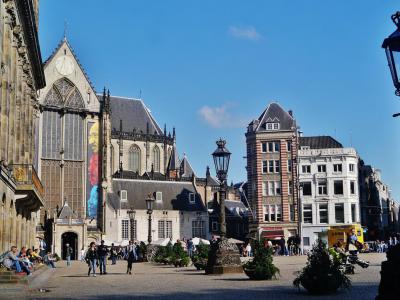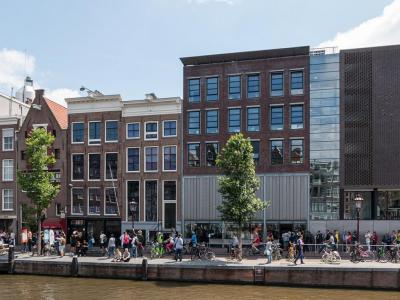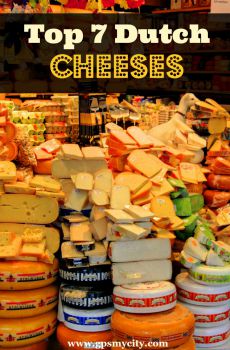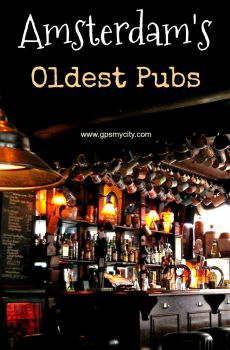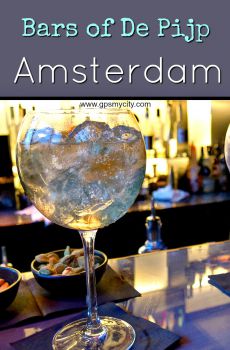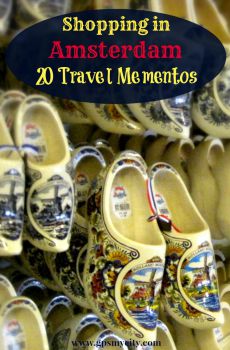
Western Canal Belt Walking Tour (Self Guided), Amsterdam
Western Canal Belt is a historic neighborhood in Amsterdam that forms part of the larger Canal Ring, a UNESCO World Heritage Site, which comprises a web of concentric canals. The three main canals making up the Western Belt are Herengracht, Keizersgracht, and Prinsengracht. They are lined with beautiful and somewhat bizarre gabled houses that were built by prosperous merchants in the 17th century, whose immense wealth accumulated during the Dutch Golden Age gave rise to the expression "Rich as a merchant in the Golden Age".
One of the most famous attractions in the Western Canal Belt is the Anne Frank House. Located on Prinsengracht, it now serves as a museum, offering insights into the lives of Jews during World War II and the Holocaust. The neighborhood also has several other notable landmarks, such as the Westerkerk (Western Church), one of Amsterdam's most recognizable temples, and the Onze-Lieve-Vrouwekerk (Church of Our Lady), a beautiful testament to Amsterdam's religious history.
Just to the east of the area, you will find Dam Square, a bustling public spot and a central hub for events and celebrations. Not far away from it is the prominent Torensluis, the widest and one of the oldest bridges in town, spanning the Singel canal.
Food enthusiasts will surely appreciate De Kaaskamer, a local specialty cheese store, while beer lovers should make sure to stop by the renowned De Bierkoning shop. For those interested in the history of Amsterdam's canals, the Museum of the Canals (Museum Het Grachtenhuis) is a must-visit.
The canals are a defining feature of Amsterdam and contribute to the city's unique character. Exploring the Western Canal Belt by foot is a popular activity for locals and tourists alike, as it allows you to immerse in the "Venice of the North"'s rich cultural heritage and appreciate the area's architectural beauty and historical significance.
One of the most famous attractions in the Western Canal Belt is the Anne Frank House. Located on Prinsengracht, it now serves as a museum, offering insights into the lives of Jews during World War II and the Holocaust. The neighborhood also has several other notable landmarks, such as the Westerkerk (Western Church), one of Amsterdam's most recognizable temples, and the Onze-Lieve-Vrouwekerk (Church of Our Lady), a beautiful testament to Amsterdam's religious history.
Just to the east of the area, you will find Dam Square, a bustling public spot and a central hub for events and celebrations. Not far away from it is the prominent Torensluis, the widest and one of the oldest bridges in town, spanning the Singel canal.
Food enthusiasts will surely appreciate De Kaaskamer, a local specialty cheese store, while beer lovers should make sure to stop by the renowned De Bierkoning shop. For those interested in the history of Amsterdam's canals, the Museum of the Canals (Museum Het Grachtenhuis) is a must-visit.
The canals are a defining feature of Amsterdam and contribute to the city's unique character. Exploring the Western Canal Belt by foot is a popular activity for locals and tourists alike, as it allows you to immerse in the "Venice of the North"'s rich cultural heritage and appreciate the area's architectural beauty and historical significance.
How it works: Download the app "GPSmyCity: Walks in 1K+ Cities" from Apple App Store or Google Play Store to your mobile phone or tablet. The app turns your mobile device into a personal tour guide and its built-in GPS navigation functions guide you from one tour stop to next. The app works offline, so no data plan is needed when traveling abroad.
Western Canal Belt Walking Tour Map
Guide Name: Western Canal Belt Walking Tour
Guide Location: Netherlands » Amsterdam (See other walking tours in Amsterdam)
Guide Type: Self-guided Walking Tour (Sightseeing)
# of Attractions: 9
Tour Duration: 2 Hour(s)
Travel Distance: 2.6 Km or 1.6 Miles
Author: clare
Sight(s) Featured in This Guide:
Guide Location: Netherlands » Amsterdam (See other walking tours in Amsterdam)
Guide Type: Self-guided Walking Tour (Sightseeing)
# of Attractions: 9
Tour Duration: 2 Hour(s)
Travel Distance: 2.6 Km or 1.6 Miles
Author: clare
Sight(s) Featured in This Guide:
- Dam Square
- Torensluis
- Puccini Bomboni
- Anne Frank House
- Westerkerk (Western Church)
- Onze-Lieve-Vrouwekerk (Church of Our Lady)
- De Kaaskamer (cheese shop)
- Grachtenmuseum (Museum of the Canals)
- De Bierkoning
1) Dam Square (must see)
Positioned at the very core of the city, Dam Square, commonly referred to as the Dam, holds historical significance as the place that bestowed Amsterdam with its name. In the 13th century, the River Amstel was dammed here, giving rise to the fishing village that eventually earned the name "Amstelredam". Boats traversed Damrak to access the square, unloading goods in the heart of the burgeoning village, which thrived through the exchange of herring for Baltic grain. Subsequently, the construction of Amsterdam's principal church, the Nieuwe Kerk, and later the town hall ("Koninklijk Paleis"), solidified the Dam's status as Amsterdam's focal point.
Today, it stands as an open and spacious area, despite the prominent presence of the primary municipal war memorial. This memorial features a prominent stone obelisk adorned with somber figures and embellished with the coats of arms representing each of the Netherlands' provinces, including the former colony of Indonesia. The square otherwise primarily serves as a venue for large-scale events, such as National Tulip Day, when the entire space blooms with tulips. While it may not demand an extensive visit, it serves as a valuable reference point for navigating the city.
Why You Should Visit:
An ideal setting to immerse oneself in the city's vibrant atmosphere, explore diverse culinary options, peruse shops, revel in music, or simply relax by the fountain.
Tip:
For those in need of restroom facilities, free and well-maintained toilets are available at the De Buenkork shop on the 5th floor.
Today, it stands as an open and spacious area, despite the prominent presence of the primary municipal war memorial. This memorial features a prominent stone obelisk adorned with somber figures and embellished with the coats of arms representing each of the Netherlands' provinces, including the former colony of Indonesia. The square otherwise primarily serves as a venue for large-scale events, such as National Tulip Day, when the entire space blooms with tulips. While it may not demand an extensive visit, it serves as a valuable reference point for navigating the city.
Why You Should Visit:
An ideal setting to immerse oneself in the city's vibrant atmosphere, explore diverse culinary options, peruse shops, revel in music, or simply relax by the fountain.
Tip:
For those in need of restroom facilities, free and well-maintained toilets are available at the De Buenkork shop on the 5th floor.
2) Torensluis
Built during the mid-17th century and boasting a width of 42 meters, the Torensluis ("tower lock") stands as the widest bridge in the city and ranks among its most ancient. The bridge's remarkable dimensions, as well as its name, can be attributed to the tower that once occupied this spot until its demolition in the mid-19th century. Evidence of the tower's presence endures in the bridge's pavement and the dungeon beneath it, both still bearing visible traces. Visitors should also keep an eye out for the prison cells tucked beneath the bridge, featuring barred windows and an arched entrance. These cells are now open to the public, often hosting events and exhibitions.
The area today retains much of its appearance from the Dutch Golden Age in the 1600s. During this period, Amsterdam's seafaring merchants held sway over the oceans, establishing trading colonies in distant lands like present-day Indonesia. Fueled by this prosperity, the city rapidly evolved into a prominent urban hub, replete with grand residences. Each merchant sought to outdo their neighbor in architectural splendor. Rotate your view 360 degrees and admire the diverse array of buildings.
Beyond the panoramic vistas, the bridge's attractions include a statue honoring writer Multatuli, a significant figure in Dutch literature and a staunch anti-colonialist. Additionally, you can revel in the expansive, sunlit terraces offered by Villa Zeezicht and Café van Zuylen.
Tip:
Seek a spot to savor the surroundings. Lean against the railing, find a bench to sit on, or perhaps pause your tour for a refreshment break at one of the highly recommended, charming bars that spill onto the bridge. Café van Zuylen (Sun-Thu: 10am–1am; Fri, Sat: 10am–3am), in particular, is renowned for its diverse beer selection. Immerse yourself in the atmosphere of the area.
The area today retains much of its appearance from the Dutch Golden Age in the 1600s. During this period, Amsterdam's seafaring merchants held sway over the oceans, establishing trading colonies in distant lands like present-day Indonesia. Fueled by this prosperity, the city rapidly evolved into a prominent urban hub, replete with grand residences. Each merchant sought to outdo their neighbor in architectural splendor. Rotate your view 360 degrees and admire the diverse array of buildings.
Beyond the panoramic vistas, the bridge's attractions include a statue honoring writer Multatuli, a significant figure in Dutch literature and a staunch anti-colonialist. Additionally, you can revel in the expansive, sunlit terraces offered by Villa Zeezicht and Café van Zuylen.
Tip:
Seek a spot to savor the surroundings. Lean against the railing, find a bench to sit on, or perhaps pause your tour for a refreshment break at one of the highly recommended, charming bars that spill onto the bridge. Café van Zuylen (Sun-Thu: 10am–1am; Fri, Sat: 10am–3am), in particular, is renowned for its diverse beer selection. Immerse yourself in the atmosphere of the area.
3) Puccini Bomboni
Amsterdam's renowned chocolatier Puccini Bomboni specializes in crafting artisanal bonbons infused with a delightful array of flavors, ranging from lavender and drambuie to vanilla poppyseed and marzipan currant with a hint of black pepper. As you step inside their elegant shop, you'll be immediately greeted by the rich aroma of cocoa filling the air and the artfully arranged, oversized truffles, celebrated as some of the world's finest.
These delectable chocolates are crafted on-site and boast a preservative-free recipe. Each bonbon is meticulously prepared using sustainable chocolate—a buzzworthy commitment in today's world—and only the highest-quality natural ingredients. You can select an assortment of these exquisite bonbons, which can be elegantly packaged in a cellophane bag or a pretty purple box, making for a perfect gift, especially for chocolate enthusiasts.
Tip:
Ensure you purchase these chocolates shortly before your return journey, as they maintain their freshness for just 7 days. Of course, that's assuming you can resist the temptation to indulge in them yourself before gifting them!
These delectable chocolates are crafted on-site and boast a preservative-free recipe. Each bonbon is meticulously prepared using sustainable chocolate—a buzzworthy commitment in today's world—and only the highest-quality natural ingredients. You can select an assortment of these exquisite bonbons, which can be elegantly packaged in a cellophane bag or a pretty purple box, making for a perfect gift, especially for chocolate enthusiasts.
Tip:
Ensure you purchase these chocolates shortly before your return journey, as they maintain their freshness for just 7 days. Of course, that's assuming you can resist the temptation to indulge in them yourself before gifting them!
4) Anne Frank House (must see)
The name Anne Frank is well-known throughout the Netherlands, belonging to a 13-year-old Jewish girl who, along with her family, fled their native Germany following the Nazi takeover and sought refuge in the Netherlands. Little did they expect that the Nazi terror would soon extend into neighboring countries as well.
The Anne Frank House, situated on Prinsengracht Canal, served as the hiding place for the Franks and the Van Pel family for over two years. Erected in 1635, the building had functioned as a residence, warehouse, stable, and office over the years. In 1940, Anne's father, Otto Frank, purchased it for his spice business, which soon transformed into a sanctuary from the German forces that were rounding up Jewish families and sending them to concentration camps. A visit to the Anne Frank House is a haunting, poignant, and overwhelming experience that provides insight into how the inhabitants attempted to lead their lives amid the horrors of that time.
Today, the premises have been converted into a museum that draw over a million visitors annually. A typical visit encompasses the primary part of the building, which includes the former Frank business premises, including the ground-floor warehouse and old offices.
Why You Should Visit:
The museum effectively preserves the memory of Anne and her family while also educating visitors about the Holocaust's atrocities.
Tip:
Plan your visit well in advance, and be mindful that the house has numerous stairs, and photography is not permitted inside.
The Anne Frank House, situated on Prinsengracht Canal, served as the hiding place for the Franks and the Van Pel family for over two years. Erected in 1635, the building had functioned as a residence, warehouse, stable, and office over the years. In 1940, Anne's father, Otto Frank, purchased it for his spice business, which soon transformed into a sanctuary from the German forces that were rounding up Jewish families and sending them to concentration camps. A visit to the Anne Frank House is a haunting, poignant, and overwhelming experience that provides insight into how the inhabitants attempted to lead their lives amid the horrors of that time.
Today, the premises have been converted into a museum that draw over a million visitors annually. A typical visit encompasses the primary part of the building, which includes the former Frank business premises, including the ground-floor warehouse and old offices.
Why You Should Visit:
The museum effectively preserves the memory of Anne and her family while also educating visitors about the Holocaust's atrocities.
Tip:
Plan your visit well in advance, and be mindful that the house has numerous stairs, and photography is not permitted inside.
5) Westerkerk (Western Church)
Anne Frank found solace in the soothing chimes of the Western Church's bells, a reminder of the world beyond her hidden refuge, until these very bells were requisitioned for the German war effort. The church, a dominating presence in the neighborhood, continues to stand tall with its 85-meter tower, the Westertoren, undeniably the most splendid in all of Amsterdam. Gracefully rising above its surroundings, it treats visitors to breathtaking panoramic vistas of the city center from its balconies and also boasts a carillon that chimes every quarter-hour (along with full melodic tunes during other intervals). At its pinnacle rests the crown of Emperor Maximilian, an enduring symbol of Amsterdam and the crowning jewel of the city's second church expressly constructed for Protestants. Designed by Hendrick de Keyser and completed a decade after his demise in 1631, the church's creation was an integral part of the city's expansion.
While the exterior exudes deliberate elegance, the interior adheres to the Calvinist congregation's austere principles. Apart from the expansive plain-glass windows that allow abundant natural light to flood in, significant features include a grand Baroque organ and an ornate wooden pulpit crowned by an oversized sounding board—once a platform for Protestant ministers who delivered lengthy sermons. While the merchant elite shunned "idolatrous" embellishments, they asserted their social status with boxed-in benches at the base of several stone columns in the nave, reserved for and rented by the affluent.
Pro Tip:
If you don't mind a cardio workout, the tower ascent, open from April to October, promises a spectacular experience. It not only allows for an up-close encounter with the bells but also provides breathtaking views from the platform near the summit, offering a sweeping vista of much of Amsterdam. While the stairs leading to the uppermost level are quite steep, they are not excessively demanding.
While the exterior exudes deliberate elegance, the interior adheres to the Calvinist congregation's austere principles. Apart from the expansive plain-glass windows that allow abundant natural light to flood in, significant features include a grand Baroque organ and an ornate wooden pulpit crowned by an oversized sounding board—once a platform for Protestant ministers who delivered lengthy sermons. While the merchant elite shunned "idolatrous" embellishments, they asserted their social status with boxed-in benches at the base of several stone columns in the nave, reserved for and rented by the affluent.
Pro Tip:
If you don't mind a cardio workout, the tower ascent, open from April to October, promises a spectacular experience. It not only allows for an up-close encounter with the bells but also provides breathtaking views from the platform near the summit, offering a sweeping vista of much of Amsterdam. While the stairs leading to the uppermost level are quite steep, they are not excessively demanding.
6) Onze-Lieve-Vrouwekerk (Church of Our Lady)
The beautiful and evocative neo-Gothic design of this Roman Catholic church, featuring its huge brick facade dating back to 1854, is undeniably pleasing to the eye and commands attention in its surroundings, offering some fantastic photo opportunities. Notably, it lacks a tower but compensates with a lavish interior adorned with large paintings and intricate carvings. Literally every nook and cranny and column is painted, and the stained glass windows only add to the grandeur.
Gothic architecture held a special significance for Catholics, as it represented the glorious era of majestic cathedrals within Catholicism. In December 1854, the Catholic publication 'De Tijd' commended the newly constructed church in the following terms: "The Church of Our Lady stands as a testament to the marvels of Gothic architecture. Within its walls, one encounters no mishmash of discordant styles and orders, a regrettable sight often witnessed in various church edifices, including those of more recent origin. This architectural style radiates purity and harmony among its diverse elements, coming together to form a breathtaking entirety that leaves an indelible mark on all who cross its sacred threshold. The facade, too, is a masterpiece, gracing the Keizersgracht."
In 1985, the church was handed over to the Syrian Orthodox Church, yet it remains a place of worship for Catholic services. For those seeking Sunday Mass, the church is accustomed to accommodating tourists and conducts services in English as well.
Gothic architecture held a special significance for Catholics, as it represented the glorious era of majestic cathedrals within Catholicism. In December 1854, the Catholic publication 'De Tijd' commended the newly constructed church in the following terms: "The Church of Our Lady stands as a testament to the marvels of Gothic architecture. Within its walls, one encounters no mishmash of discordant styles and orders, a regrettable sight often witnessed in various church edifices, including those of more recent origin. This architectural style radiates purity and harmony among its diverse elements, coming together to form a breathtaking entirety that leaves an indelible mark on all who cross its sacred threshold. The facade, too, is a masterpiece, gracing the Keizersgracht."
In 1985, the church was handed over to the Syrian Orthodox Church, yet it remains a place of worship for Catholic services. For those seeking Sunday Mass, the church is accustomed to accommodating tourists and conducts services in English as well.
7) De Kaaskamer (cheese shop)
These days, when most folks are buying their cheeses from supermarkets, quite a few of them, especially in cities like Amsterdam, are sold at street markets, farmers' markets, and fancy specialty stores. One such store is found in the Nine Little Streets ("De Negen Straatjes") area and goes by the name De Kaaskamer. This shop carries a fantastic range of real-deal, high-quality cheeses sourced from all over the globe, making it an ideal destination to savor both imported and locally-produced delicacies.
Unlike the array of cheesy tourist-traps that have sprouted up up all over Amsterdam lately, which the locals avoid like the plague — you know, the ones that locals dodge like the plague because they're selling overpriced cheese in souvenir packages – De Kaaskamer is authentic and even artisan in nature, serving the locals and visitors alike. Understandably, this place is busy, but the friendly staff is super helpul and efficient, and don't skimp on the free samples, either.
If you're scratching your head about what cheese to get, don't sweat it – just hit up the staff for their recommendations. Otherwise, give their Gouda a whirl. Truffled Gouda is like heaven in cheese form, and the aged Gouda with cumin seeds, paired with a fig and nut loaf, is straight-up out of this world!
Unlike the array of cheesy tourist-traps that have sprouted up up all over Amsterdam lately, which the locals avoid like the plague — you know, the ones that locals dodge like the plague because they're selling overpriced cheese in souvenir packages – De Kaaskamer is authentic and even artisan in nature, serving the locals and visitors alike. Understandably, this place is busy, but the friendly staff is super helpul and efficient, and don't skimp on the free samples, either.
If you're scratching your head about what cheese to get, don't sweat it – just hit up the staff for their recommendations. Otherwise, give their Gouda a whirl. Truffled Gouda is like heaven in cheese form, and the aged Gouda with cumin seeds, paired with a fig and nut loaf, is straight-up out of this world!
8) Grachtenmuseum (Museum of the Canals)
Even though it's just a quick 45-minute visit, the Museum of the Canals provides tremendous insight into the physical building it occupies, as well as the construction techniques required to build in Amsterdam as its population grew. Fittingly occupying a four-story former 17th-century luxury canal house on the Herengracht, it also provides an inside look at how the city's upper crust lived.
Delightfully informative, the exhibits explain why some houses lean sideways or forward, the city planning and associated negotiations, and even the funding of America's revolution. Miniature models of the canal houses are of interest, but even better are these little "voyeur" peepholes in the walls where visitors can peek into canal house interiors from different times. A lot of thought had been put into making this place interactive and fun, creatively using video projections and 3D displays.
Last but not least, since most of the canal houses in Amsterdam have beautiful gardens behind them that you cannot see from the road, it’s a real a treat to get a view of the lovely garden behind this museum; a quiet oasis and great example of Amsterdam’s hidden gems.
Delightfully informative, the exhibits explain why some houses lean sideways or forward, the city planning and associated negotiations, and even the funding of America's revolution. Miniature models of the canal houses are of interest, but even better are these little "voyeur" peepholes in the walls where visitors can peek into canal house interiors from different times. A lot of thought had been put into making this place interactive and fun, creatively using video projections and 3D displays.
Last but not least, since most of the canal houses in Amsterdam have beautiful gardens behind them that you cannot see from the road, it’s a real a treat to get a view of the lovely garden behind this museum; a quiet oasis and great example of Amsterdam’s hidden gems.
9) De Bierkoning
Mention Dutch beer and most people think of Heineken, a huge brand that is ubiquitous worldwide. And sure, Heineken is pretty tasty, but guess what? The Netherlands has a whole bunch of other beers that are even more delicious!
If you're on the hunt for local and specialty brews, look no further than De Bierkoning, a charming beer shop/kingdom that's been around forever right in the heart of the city. This place is like a beer paradise, with three floors packed full of over 1,000 different Dutch and international beers. You can bet they'll have whatever you're searching for, and probably some crazy stuff you didn't even know existed (ever heard of cocoa beer?).
But that's not all – they've got an amazing selection of beer glasses and all sorts of beer-related gear like mats and bottle openers. And the prices? Totally reasonable. Plus, the folks working there are super friendly and can steer you in the right direction if you're looking for some cool up-and-coming beers to try or ones that are making waves in the beer scene. Cheers to that!
If you're on the hunt for local and specialty brews, look no further than De Bierkoning, a charming beer shop/kingdom that's been around forever right in the heart of the city. This place is like a beer paradise, with three floors packed full of over 1,000 different Dutch and international beers. You can bet they'll have whatever you're searching for, and probably some crazy stuff you didn't even know existed (ever heard of cocoa beer?).
But that's not all – they've got an amazing selection of beer glasses and all sorts of beer-related gear like mats and bottle openers. And the prices? Totally reasonable. Plus, the folks working there are super friendly and can steer you in the right direction if you're looking for some cool up-and-coming beers to try or ones that are making waves in the beer scene. Cheers to that!
Walking Tours in Amsterdam, Netherlands
Create Your Own Walk in Amsterdam
Creating your own self-guided walk in Amsterdam is easy and fun. Choose the city attractions that you want to see and a walk route map will be created just for you. You can even set your hotel as the start point of the walk.
Amsterdam Introduction Walking Tour
“Dancing to its own beat,” the Dutch capital Amsterdam is famous for its unusual life rhythm that is manifested in the air of canals, coffee shops, and the Red Light District, as well as many other things that altogether draw annually over five million visitors to the city.
A place where “hipness meets history”, Amsterdam emerged in the late 12th century as a small fishing village... view more
Tour Duration: 3 Hour(s)
Travel Distance: 5.1 Km or 3.2 Miles
A place where “hipness meets history”, Amsterdam emerged in the late 12th century as a small fishing village... view more
Tour Duration: 3 Hour(s)
Travel Distance: 5.1 Km or 3.2 Miles
Amsterdam's Historical Churches Walking Tour
The history of Amsterdam is deeply intertwined with its religious heritage. The city is home to several historical churches, each with its own unique charm and significance. These religious sites serve as both spiritual centers and architectural treasures that provide insight into the city's past.
Our walk starts in the Central Station area and leads you to visit the eight most prominent... view more
Tour Duration: 2 Hour(s)
Travel Distance: 3.8 Km or 2.4 Miles
Our walk starts in the Central Station area and leads you to visit the eight most prominent... view more
Tour Duration: 2 Hour(s)
Travel Distance: 3.8 Km or 2.4 Miles
Amsterdam Food Tour
Amsterdam's food scene is a delightful fusion of local traditions and global influences. Making your way through the interlocking canals, pretty bridges, and a maze of streets laden with diverse eateries and bars may easily render you hankering for a bite to eat and/or a drink to wash it down with.
The diverse culinary landscape of Amsterdam caters to a wide range of tastes and... view more
Tour Duration: 2 Hour(s)
Travel Distance: 2.6 Km or 1.6 Miles
The diverse culinary landscape of Amsterdam caters to a wide range of tastes and... view more
Tour Duration: 2 Hour(s)
Travel Distance: 2.6 Km or 1.6 Miles
Jewish Quarter Walking Tour
The Jodenbuurt (Jewish Quarter) of Amsterdam had been the center of the Dutch Jewish community from the 16th century up until the Second World War. The neighborhood is best known as the birthplace of Baruch Spinoza, the home of Rembrandt, and the Jewish ghetto under the Nazi occupation of the Netherlands.
Once crowded with open-air stalls, smoking factories and tenement buildings, the Old... view more
Tour Duration: 2 Hour(s)
Travel Distance: 2.0 Km or 1.2 Miles
Once crowded with open-air stalls, smoking factories and tenement buildings, the Old... view more
Tour Duration: 2 Hour(s)
Travel Distance: 2.0 Km or 1.2 Miles
Red Light District Walking Tour
Amsterdam's Rosse Buurt (Red Light District) has been the subject of much fascination for centuries. The medieval part of it, also the largest, known as De Wallen (or De Walletjes), is particularly famous for its fantastic juxtaposition of age-old architecture, leaning canal houses, narrow alleys lined with old-school bars, quaint shops and late-night pursuits. Of course, the main draw here... view more
Tour Duration: 2 Hour(s)
Travel Distance: 2.1 Km or 1.3 Miles
Tour Duration: 2 Hour(s)
Travel Distance: 2.1 Km or 1.3 Miles
Southern Canal Belt Walking Tour
The Canal District, known as Grachtengordel in Dutch, is a globally renowned example of urban planning and architectural excellence within Amsterdam. This area has remained remarkably well-preserved for over four centuries, celebrated for its charming small bridges, canal crossings, and 17th-century residences. Encircling the Old City Centre in a horseshoe shape, the Canal Ring encompasses three... view more
Tour Duration: 2 Hour(s)
Travel Distance: 3.1 Km or 1.9 Miles
Tour Duration: 2 Hour(s)
Travel Distance: 3.1 Km or 1.9 Miles
Useful Travel Guides for Planning Your Trip
12 Traditional Dutch Foods You Must Try in Amsterdam
Cool climate, closeness to sea, and sense of adventure have made the Dutch what they are – skillful farmers, industrious seafarers and, generally, people with the taste for life and good hearty meal, whether it comes from the sea they live by or the land they set their feet on. All of this has...
Top 7 Dutch Cheeses to Try in Amsterdam
Don't mind things turning a bit "cheesy" when in Holland. After all, this small country is renowned for its cheese manufacturing and successfully competes, in terms of cheese exports, with such economic giants as the United States and Germany. Amsterdam alone and its vicinities are...
Dutch Sweets and Pastries
Known primarily for their cheeses, the Dutch have proven just as passionate about their sweets and pastries, many of which have come about as a result of the centuries of colonial past that had infused Holland with Oriental flavors and ingredients. Blended with their own dairy-rich European...
The Oldest and Historic Pubs of Amsterdam
Amsterdam is a stunningly beautiful city, steeped in history, with hidden treasures and fascinating tales practically around every corner. Like all marvelous cities, Amsterdam has its share of dining and drinking establishments from the modern to the ancient. This guide will assist you in exploring...
Bars of De Pijp, Amsterdam
Sitting to the south of the Centrum (city centre) De Pijp area of Amsterdam is a fascinating mixture of trendy urbanites, students, immigrants and Amsterdammers. De Pijp has a long history as the Bohemian part of town, which is reflected in the different cafés of the area. There truly is something...
Souvenir Shopping in Amsterdam: 20 Dutch Things To Buy
Tulips, red lights, weed... Other than these, there are plenty of good things to remember Amsterdam by. What's more, you can take home some of them quite legally. Look here to see what to buy in Amsterdam and...
The Most Popular Cities
/ view all
